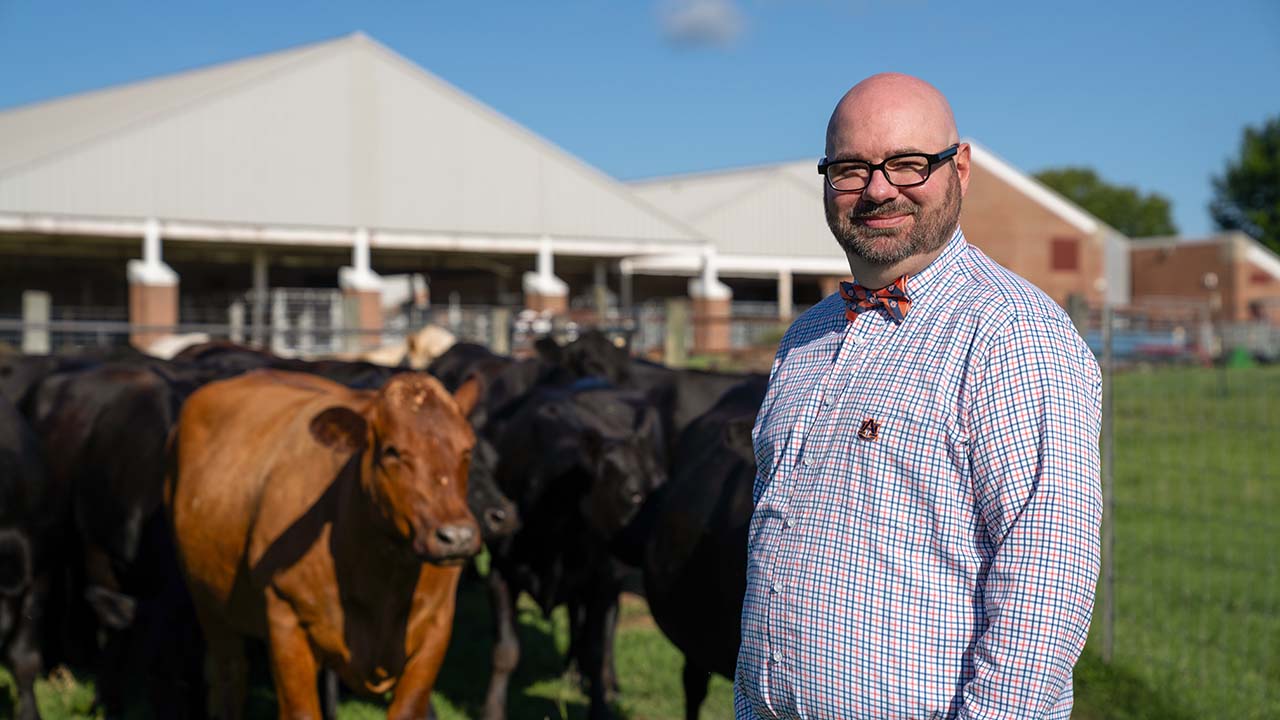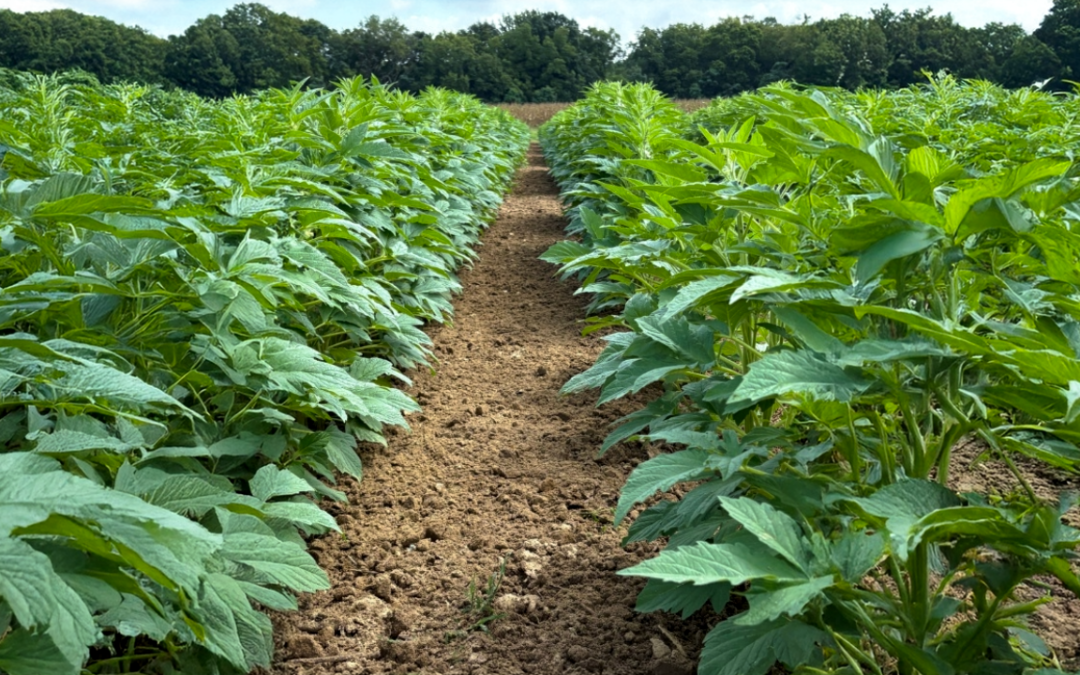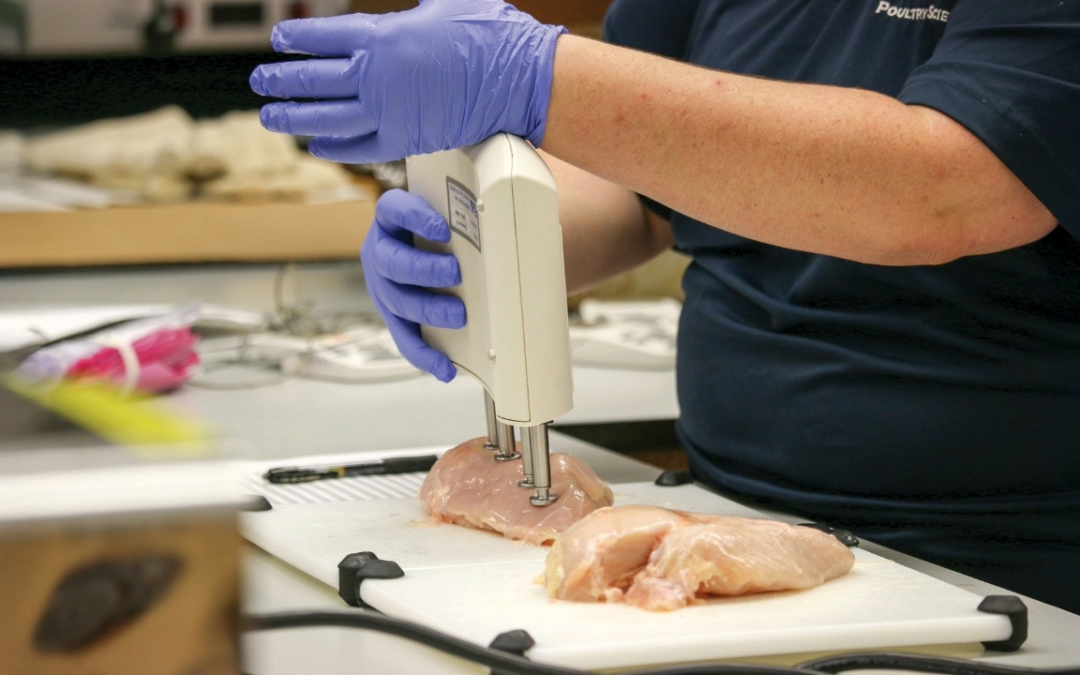When Brandon Smith discusses his research on sustainable beef production, he’s speaking not only as an assistant professor in the Auburn University Department of Animal Sciences but also as someone who is intimately familiar with the needs of producers.
“I come from a farming background,” Smith said. “My family raised beef cattle in south Alabama, and my wife’s family raised cattle, corn, cotton and peanuts, so I know there will never be a time where there are little to no input costs in farming. I also know one thing I was taught growing up: You’ve got to have money to make money. Of course, those two concepts are at odds with each other, but I do believe there is a way to have both.”
Sometimes, he said, it makes more sense to increase input costs in one part of the system if it means costs are decreased somewhere else or the profit margin of the system is increased.
And that’s exactly what Smith has set out to do with one of his primary research projects.
“The central hypothesis is that providing supplemental byproduct feedstuffs to grazing cattle more than their nutrient requirements will enhance weight gain, pasture productivity and soil health and fertility,” he said. “Our long-term goal is to support economical and sustainable production of beef cattle in pasture-based systems through efficient nutritional and nutrient management.”
By increasing feed costs, Smith hopes the decreased fertilizer inputs (the primary objective of the system) and increased cattle gains (a complementary benefit) will offset the costs and improve profitability for the system.
“As an added environmental incentive, adding non-roughage feed into the diet should also decrease methane emissions from cattle production, and manure as a fertilizer should boost soil organic matter and soil health,” said Smith, who is also a researcher with the Alabama Agricultural Experiment Station.
The maintenance of pastures for grazing currently accounts for approximately $132.50 per head of cattle in the United States or 23% of operating costs. Also, pasture nutrient input represents the single greatest influence in productivity per unit area at a time when agricultural fertilizer prices are at an all-time high.
While current recommendations are that pasture fertilization is cost-effective with prices up to $1.10/kg, these recommendations consider only the tradeoff of purchasing or producing stored forage.
“Introduction of supplemental feedstuffs, especially byproducts, to the grazing system represents an alternative management strategy that has been shown to support enhanced animal performance,” Smith said. “The addition of supplemental feedstuffs has been shown to increase carrying capacity of pastures while also increasing the concentration of nutrients in the resulting manure and amount of manure nutrients taken up by the subsequent plant.”
Increasing nutrient provision to the animal also has been shown to offset the amount of soil nutrients taken up by the forage crop, he added. These results indicate that supplemental feeding of grazing cattle may be a viable option to augment or replace pasture fertilization.
“In my doctoral work at Texas A&M, we were trying to find the optimum level (i.e., the least amount) of supplement that would increase cattle weight gains on pasture without the cost of gain exceeding the value of gain,” Smith said. “That’s a pretty thin needle to thread, but that has been the goal of most supplementation research over the years, and we have identified some pretty good systems to address the objectives.”
He has noticed in those systems, though, that when you exceed the economic threshold—when the cost of gain or supplemental feed exceeds the value of gain—the carrying capacity of the pasture (how many animals the forage could support) increases.
“That, in and of itself, means there are more complex economics at play depending on whether you express gain per animal or per acre,” Smith said. “But I also started to question what the added benefits of more animals could be. Specifically, more animals on pasture means more manure, and more manure means more nutrient return to the system. That was the point I wanted to drill down on, and that is where this research was born.”
The major objectives of the study—to determine the effects of supplemental feeding on animal performance, pasture productivity, economic viability and soil fertility and health—are being addressed through a multi-location, multi-year feeding trial at the Experiment Station’s Black Belt Research and Extension Center in Marion Junction and at the Tennessee Valley Research and Extension Center in Belle Mina.
“Across the grazing season, we are measuring animal body weight, soil nutrient status, manure distribution and soil biological activity,” he said. “We also have partnered with an economist at Mississippi State University to put dollar values to the system.”
Some producers might already be using similar systems and not be aware of it, Smith said.
“Offering supplemental feed is nothing new to the world of cattle production,” he said. “However, the discussion has always been focused on providing the limiting nutrient or focusing on the cost of gain. This research shifts the narrative so we can start modifying these systems to focus on the entire pasture ecosystem rather than each finite element.”
Smith says the next questions he is addressing in his research include:
- Does the system change depending on the type of supplemental feed selected?
- Can we increase a certain fertilizer element in the feed to target soil fertility?
- Are there feed additives that would make manure minerals available for plant uptake more quickly?
“This producer-forward line of research questioning has a lot of potential, and I am looking forward to getting boots on the ground for years to come in ground-truthing some of these ‘academic’ questions,” he said.
Ultimately, identifying a nutritional response to the current fertilizer crisis could reduce cost of gain by up to 56% while potentially cutting fertilizer input costs by $24 per hectare, Smith said. This would increase profitability for the 91.9 million head of beef cattle in the United States, especially the 38.5 million head located in the Southeastern United States that are raised primarily on pasture systems.





